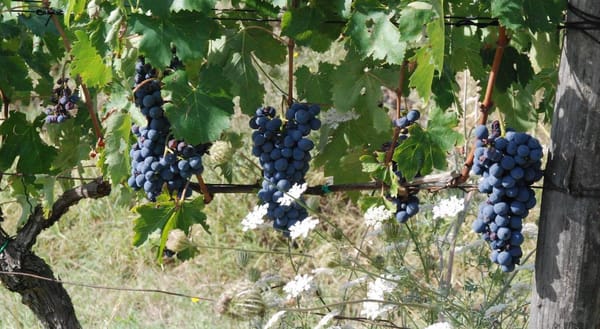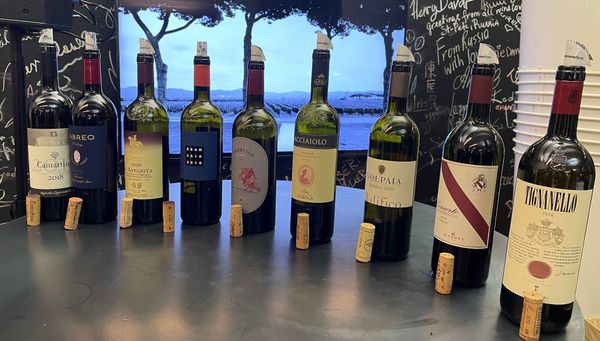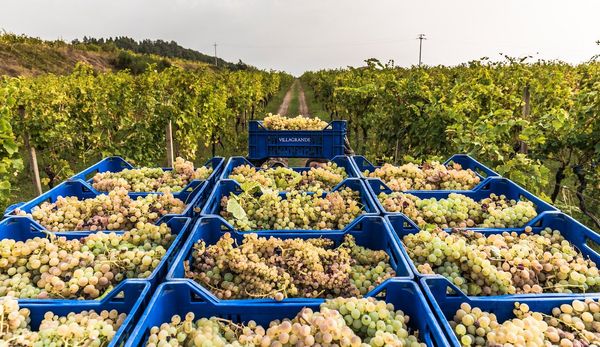🍇 Grape guide: Stanušina
Stanušina is a red grape variety native to North Macedonia. Despite its interesting potential, especially in an age where consumers seek lighter, fresher wines, the variety is extremely rare and cultivated commercially by only a handful of wineries.
🗺️ Where it grows
Also known as Black Stanušina, the grape is theoretically found in vineyards throughout Macedonia, however, most known plantings are found in the Dimir Kapija area of the Tikveš region in North Macedonia. From what we know, it tends to ripen in early October and is highly resistant to drought. It’s also delicate and once picked, it needs a lot of attention in the cellar to produce good wine.
📍Appellations
There are no official appellations in North Macedonia.
📜 History
Stanušina was once the principal grape variety of the Tikveš region in North Macedonia. It was also cultivated around the towns of Ohrid and Bitola. It was mostly wiped out by phylloxera. In recent years, Jordan Trajkov’s Popova Kula has invested time, energy and money into protecting the variety. Without this continued commitment the grape could still disappear. There are a handful of producers making wines from it and there may well be room for a revival as North Macedonia's wine scene continues to grow. variety’s re-emergence, but one hopes that more producers in Macedonia will attempt to ensure
🧬 DNA
I'm still researching and following developments on this. If you have any information you'd like to share please get in touch with me.
📚 Lexicon
Stanušina is also known as Black Stanušina or Gradesh.
🚜 In the vineyard
Like many old Balkan grapes, Stanušina was allowed to disappear during the communist period in favour of varieties with higher yields. Its low levels of colour, tannin and fruit made it unattractive to farmers seeking only volume. It was ultimately just too difficult to cultivate. Stanušina's grape cluster is moderately sized, taking on a cylindrical shape and typically lacking wings. The berries are round and of medium size. Their dark blue skins often develop small rusty spots, around which distinctive unwaxed rings form—a unique characteristic of this variety.
👩🏻🏭 In the cellar
I have reached out for information and am waiting for a response.
🍷 Wine style
Stanušina produces light red wines with rustic red fruit and fresh vibrant acidity. I have seen it produced as a white, rose and red wine. The wines are typically very fresh and elegant, with raspberry, wild strawberry and red currant flavours, silky tannins and exceptional refreshing acidity. It is a brilliant partner to local Balkan dishes such as Sarma or stuffed bell peppers. The rose produced by Popova Kula is a very attractive salmon colour.
🍏 Aromas & flavours
Wines made from Stanušina grapes are often described as having a medium to full body, moderate acidity, and flavours that can include red fruit notes, spice, and herbal nuances. Personally, the wines I have tasted from Stanušina are quite light and tend to lack colour. In terms of aromas and flavours, the wines are are the red berry spectrum.
🔮 Predictions
One of the challenges for Stanushina is the strategic investment in promoting Vranec as the key grape variety of North Macedonia. There is very little commercial appetite to attempt to promote Stanushina. As such, the variety is likely to remain obscure.
🎇 Recommendations
As far as I know, Popova Kula lead the way, producing at least four different expressions of the grape. The only other project bottling Stanušina is Brusani Winery although this is far less commercial and winemaker Orce Dimitrievski does not make one every year.
🏆 My top three
🥇 Popova Kula
🥈 Brusani
🥉 Venec




